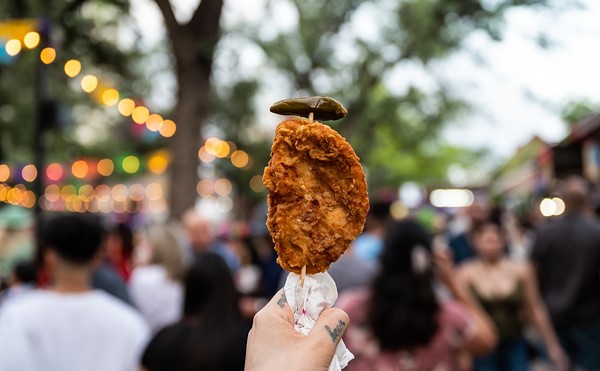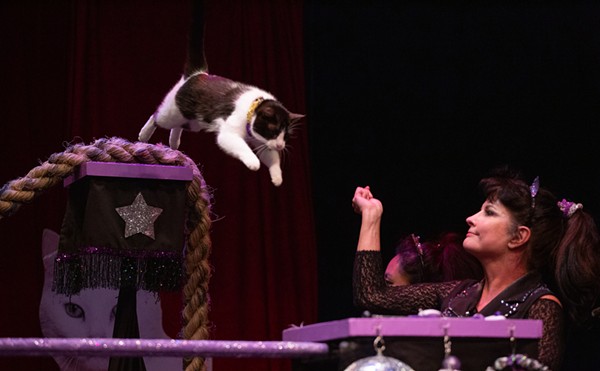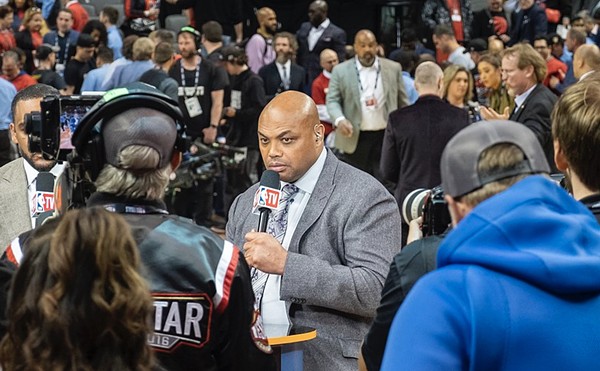Norman Rockwell is considered by his detractors to be an anti-modernist upholder of traditional American values. But in this travelling exhibition, the New York-born artist emerges as a shrewd conceptualist in tune with his pre-television audience. If that doesn’t grab you, the exhibit’s exploration of how Rockwell employed photography to create the richly detailed, naturalistic paintings used as illustrations by magazines such as The Saturday Evening Post and Look will.
At the McNay Art Museum, “Norman Rockwell: Behind the Camera,” organized by the Norman Rockwell Museum in Massachusetts, features more than 100 black-and-white photographs culled from almost 20,000 negatives in the Rockwell archive. Rockwell worked almost like a movie director, using professional photographers to click the shutter, while he directed his amateur models – relatives, friends, and neighbors – to dramatize his humorous slices of American life.
Along with the prints are 17 paintings and 10 drawings, providing an opportunity to see Rockwell’s actual work rather than the reproductions most Americans are familiar with, although there are plenty of magazine covers, posters, and pages from publications as well.
Long before Photoshop, Rockwell often took more than 100 photographs for each of his illustrations, cutting and editing various images into a larger collage to create the overall look he wanted. He typically began with a sketch of an idea, which he pitched to an editor, and then he looked for people who fit the characters he wanted to create. What’s interesting is to compare the photographs with the paintings to see what Rockwell changed.
He added a lot to his final compositions — making eyebrows more arched, smiles toothier, inserting props, shifting poses and pushing expressions more over the top. In the era before television sitcoms such as The Andy Griffith Show, The Beverly Hillbillies, and Petticoat Junction, Rockwell staged small, wholesome comedies that made his paintings icons of American popular culture, reflecting 19th-century homespun values despite a rapidly changing world.
For a Saturday Evening Post cover published Aug. 30, 1947, Rockwell created a two-panel illustration, Going and Coming, showing a happy, expectant family en route to their vacation destination and the dejected, exhausted family returning home. Rockwell used his postman’s car for the family’s vehicle, but each member of the family posed in Rockwell’s Vermont studio using a table and white screens as stand-ins for the car. Yvonne Cross, the little girl blowing bubblegum bubbles, also appears in Little Girl Observing Lovers on a Train (1944). Her real-life father plays her dad; bright-eyed going and shoulders slumped coming back.
Brunette, angelic Mary Whalen was another favorite model who appears in two of Rockwell’s most-loved illustrations. She’s a Mark Twain tomboy in Girl With Black Eye (1953), though she doesn’t have a black eye in the photograph Rockwell used. For the poignant Girl at Mirror (1965), Whalen remembers Rockwell telling her that she had “outgrown her doll,” which isn’t in the posed photograph, although the artist added the crumpled doll beside the mirror in the finished painting.
An insightful wall installation shows how Rockwell assembled various photographs, selected from more than 73 images, to paint Boy in a Dining Car (1948), including adding a shot of the waiter’s feet because the train car was too narrow for the camera to capture the full figure.
In one exuberant photo of a girl with outstretched arms posed for Leaving the Hospital (1954), Rockwell, wearing a bowtie and sports jacket, is directing the girl with an amazed look on his face. In several of the photos, you can see the artist’s hands and arms pointing directions and he sometimes posed for images himself. However, one of the best paintings in the show, The Marriage License (1955), almost perfectly duplicates an original photograph, which didn’t require much editing by Rockwell.
Rockwell moved to the more liberal Look in the 1960s, freeing him to take on more topical subjects, such as The Problem We All Live With (1964). While models were used in his re-creation of the story of Ruby Bridges, one of the first African-American children to attend an all-white school in New Orleans, Rockwell’s painting of the young girl being escorted to school, the blood-red splat of a hurled tomato on the wall behind her, is one of the most enduring images of the Civil Rights era.
Norman Rockwell: Behind the Camera
$10-$15; free for members; Free 4-9 pm Thu
Noon-5pm Sun; 10am-4pm Tue, Wed, Fri; 10am-9pm Thu; 10am-5pm Sat
McNay Art Museum
6000 N New Braunfels
(210) 824-5368
mcnayart.org
Through Sept. 1















